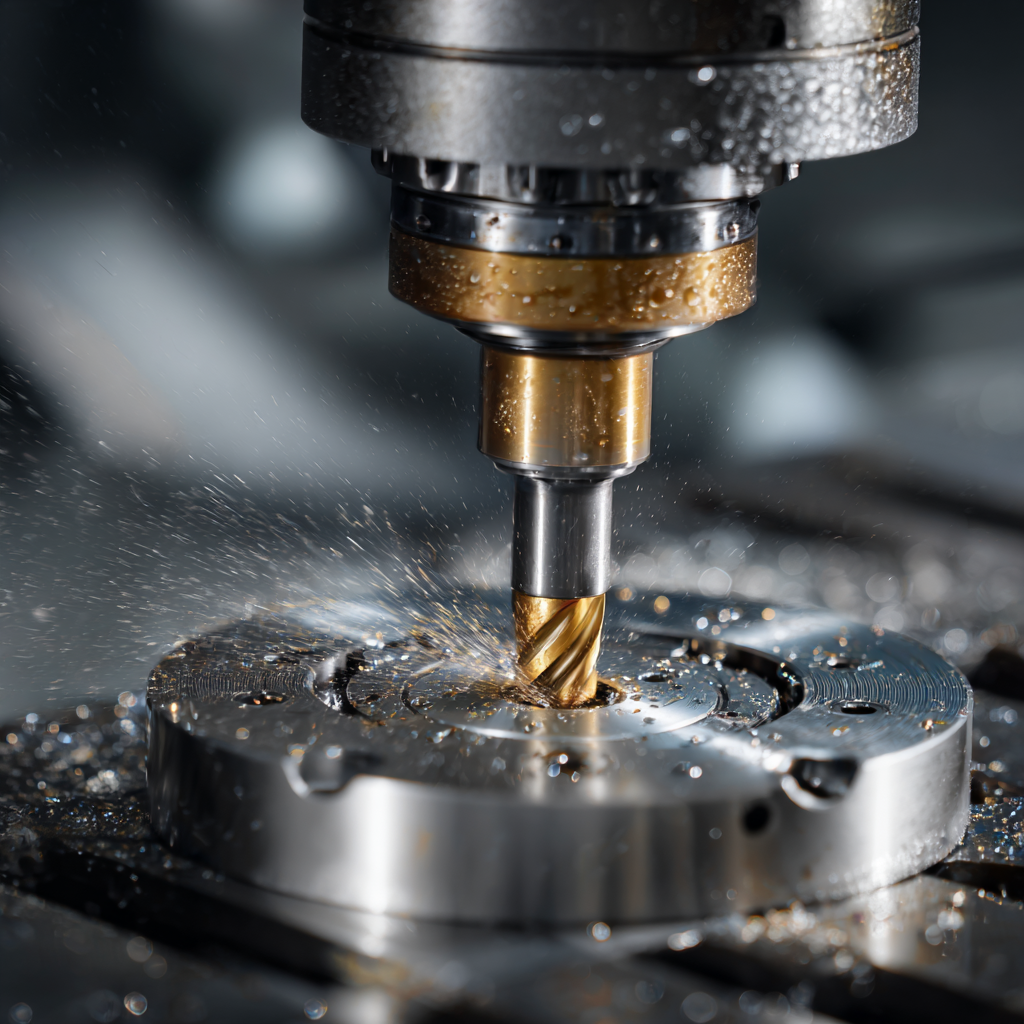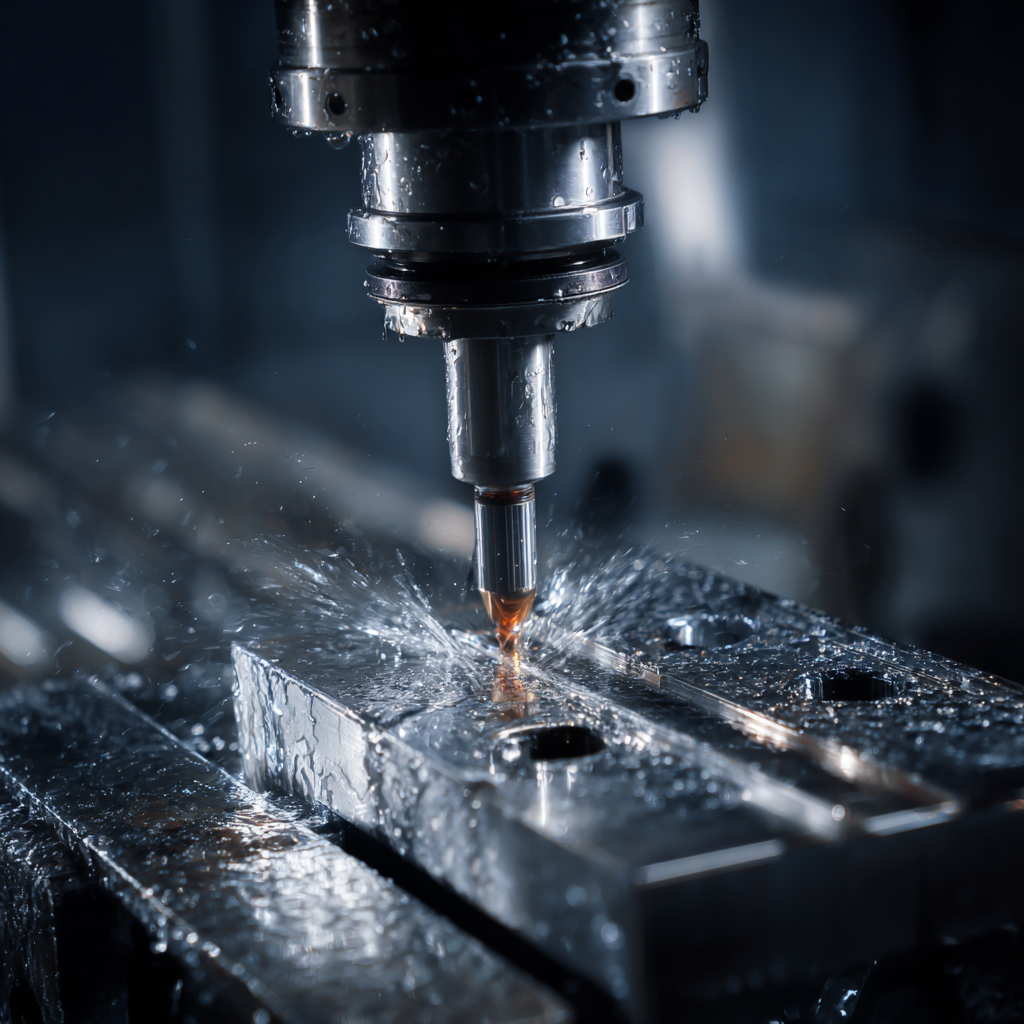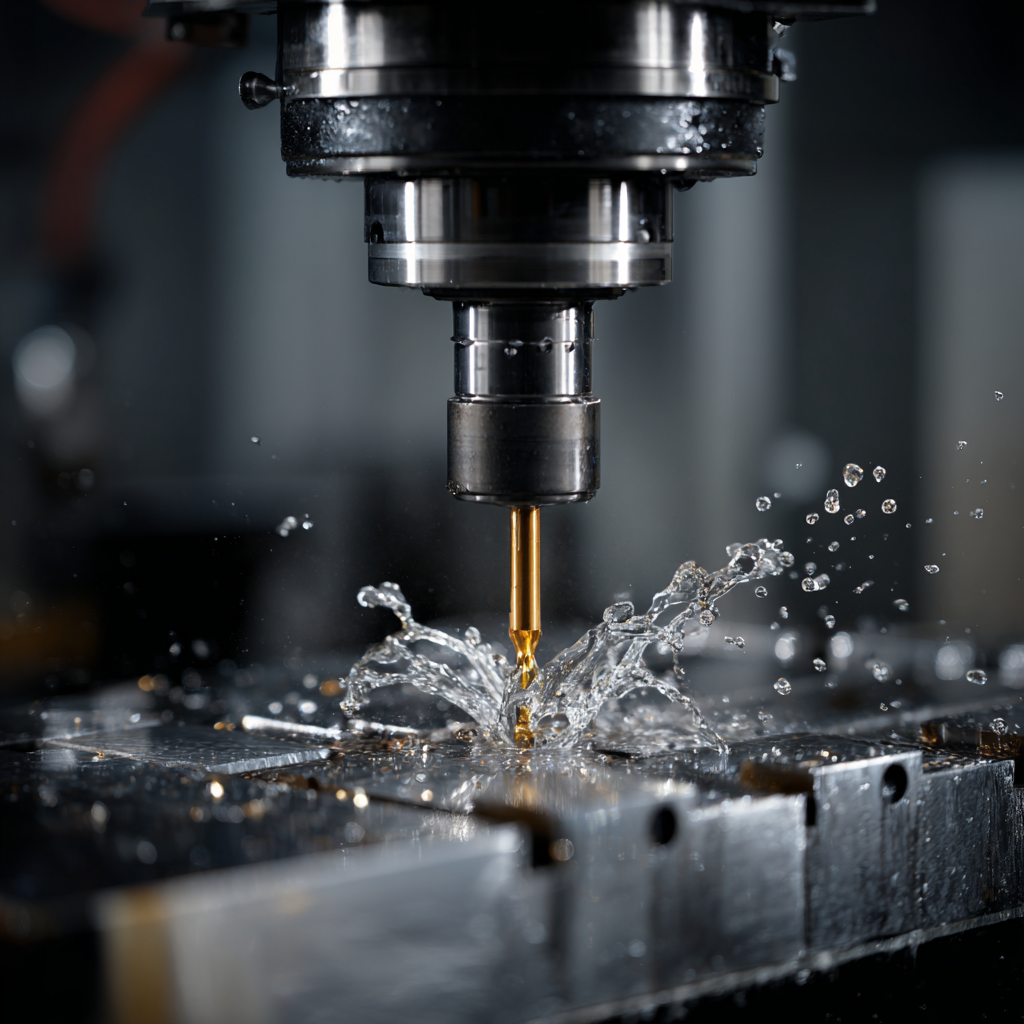METROM’s
Blog
METROM’s
Blog
Exploring the Best CNC Machines and Their Alternatives for Your Business Needs
 As we venture into 2025, the landscape of manufacturing technology is rapidly evolving, driven by advancements in automation and digital transformation. A pivotal component of this evolution is CNC machines, which have been shown to enhance productivity and precision in various industries. According to a recent report by MarketsandMarkets, the CNC machine market is projected to reach $100 billion by 2026, growing at a CAGR of over 6% during the forecast period. This growth underscores the increasing demand for automated solutions that can deliver high-quality production while reducing errors and operational costs. As businesses seek to optimize their processes, exploring not only the latest CNC machines but also their alternatives becomes essential in meeting diverse operational needs and staying competitive in an ever-changing market.
As we venture into 2025, the landscape of manufacturing technology is rapidly evolving, driven by advancements in automation and digital transformation. A pivotal component of this evolution is CNC machines, which have been shown to enhance productivity and precision in various industries. According to a recent report by MarketsandMarkets, the CNC machine market is projected to reach $100 billion by 2026, growing at a CAGR of over 6% during the forecast period. This growth underscores the increasing demand for automated solutions that can deliver high-quality production while reducing errors and operational costs. As businesses seek to optimize their processes, exploring not only the latest CNC machines but also their alternatives becomes essential in meeting diverse operational needs and staying competitive in an ever-changing market.
Trends Shaping CNC Machine Technology in 2025
As we look ahead to 2025, the CNC machine industry is poised for transformative growth, largely driven by advancements in technology and rising demands for precision. The global CNC machine market is projected to expand from approximately $101.22 billion in 2025 to an astounding $195.59 billion by 2032, with a compound annual growth rate (CAGR) of 9.9%. This growth is boosted by an increasing need for high-precision and multi-axis machining centers, particularly as industries seek to enhance production efficiency and output quality.

Additionally, the integration of artificial intelligence (AI) into CNC machinery is set to be a game-changer. Reports indicate that the CNC machine tools market is expected to grow by USD 21.9 billion from 2025 to 2029, largely fueled by AI advancements that facilitate smarter and more adaptive manufacturing processes. Automation solutions, including robotic systems, are also becoming essential, particularly as manufacturers face barriers in investing in CNC automation. The evolution of these technologies is not only redefining operational capabilities but is also aligning with broader manufacturing trends, such as digital transformation and Industry 4.0, which emphasize enhanced connectivity and data-driven decision-making.
Evaluating the Best CNC Machines for Diverse Business Applications
When evaluating the best CNC machines for diverse business applications, it's essential to consider not only your specific industry needs but also the technological advancements and efficiency improvements that modern CNC systems offer. According to the 2023 Global CNC Machine Market report, the industry is projected to grow by 6.5% annually, driven by advancements in automation and the increasing demand for precision machining across sectors such as aerospace, automotive, and manufacturing. This growth underscores the importance of selecting a CNC machine that aligns with your operational requirements to avoid costly downtime.
Tip: When choosing a CNC machine, assess the types of materials you'll be working with and the cutting speeds required for your projects. Machines like vertical milling centers are ideal for high-precision tasks, while laser cutters can efficiently handle a range of materials from metals to plastics.
Understanding the various applications of CNC machinery helps in optimizing production processes. For instance, a high-speed CNC router is excellent for woodworking and sign-making, whereas a CNC lathe is perfect for producing cylindrical parts. The report also highlights that companies integrating advanced CNC systems report a 20% reduction in labor costs and a 30% increase in production efficiency.
Tip: Consider opting for machines with advanced software capabilities, such as CAD/CAM integration, which streamlines the design-to-production workflow, enhancing accuracy and reducing production lead times.
Emerging Alternatives to CNC Machines for Cost-Effectiveness
As CNC machines continue to dominate the manufacturing landscape, businesses are increasingly seeking cost-effective alternatives that can meet their varied production needs. According to a report by MarketsandMarkets, the global CNC machine market is expected to grow from $81 billion in 2021 to $116 billion by 2026, highlighting the robust demand for these machines. However, small and medium-sized enterprises are often challenged by the high initial investment costs and maintenance expenses associated with CNC technology.
One emerging alternative is the adoption of 3D printing, which allows for quick prototyping and the production of complex geometries without the need for expensive tooling. A survey conducted by* Wohlers Associates *suggests that the 3D printing industry will reach $35 billion by 2024, making it an attractive option for businesses looking to conserve funds. Additionally, laser cutting technology has emerged as a viable solution, providing precision and speed for sheet materials at a fraction of the cost of traditional CNC machines.
**Tips:** When considering alternatives, evaluate your production volume and material requirements carefully. For low-volume production, 3D printing can significantly reduce costs. Furthermore, always factor in the total cost of ownership, including maintenance, before making your final decision. Lastly, staying updated with the latest advancements in technology can help you make informed choices that align with your future business growth.
Key Factors to Consider When Choosing a CNC Machine for Your Needs
When selecting a CNC machine for your business needs, several key factors must be taken into account. First, consider the scale and type of production you require. Whether you need a machine for high-volume production or a versatile unit for various tasks, the choice between traditional and advanced CNC options can significantly impact your operations. The current market trends indicate a growth trajectory, with the global CNC machines market expected to reach nearly $197 billion by 2032, highlighting the increasing demand for these sophisticated tools.
Another critical aspect is the level of automation and technology integration. Modern CNC machines often come equipped with advanced software for better precision and efficiency. It’s essential to evaluate the machine’s compatibility with existing systems and the potential for scalability as your business grows. Factors such as cost, maintenance needs, and the availability of skilled personnel to operate these machines also play a vital role in the decision-making process. Navigating these considerations carefully will ensure that your investment aligns with your business goals and enhances overall productivity.
Exploring the Best CNC Machines and Their Alternatives for Your Business Needs
| Machine Type | Max Cutting Speed (mm/min) | Working Area (mm) | Control System | Material Compatibility | Price Range (USD) |
|---|---|---|---|---|---|
| CNC Router | 3000 | 1200 x 2400 | G-code | Wood, Plastics, Composites | 2,000 - 15,000 |
| CNC Mill | 2500 | 600 x 1200 | LinuxCNC | Metal, Plastic, Wood | 5,000 - 50,000 |
| Laser Cutter | 5000 | 1300 x 2500 | DSP or RDWorks | Acrylic, Wood, Fabric | 3,000 - 20,000 |
| Plasma Cutter | 6000 | 2000 x 4000 | Mach3 | Metal (Steel, Aluminum) | 5,000 - 30,000 |
| Waterjet Cutter | 1800 | 3000 x 6000 | Z-axis Control | Metal, Stone, Glass | 20,000 - 300,000 |
Future Innovations in CNC Machinery: What to Expect by 2025
As industries rapidly embrace automation, the CNC machinery landscape is set for significant transformations by 2025. According to a report from MarketsandMarkets, the global CNC machine market is projected to reach $100 billion by 2025, showcasing a compound annual growth rate (CAGR) of 8.5%. This surge highlights the increasing integration of smart technologies, including artificial intelligence and machine learning, into CNC machinery, enabling enhanced precision and efficiency in manufacturing processes.

Future innovations are likely to focus on the development of adaptive CNC machines that can modify their operations in real-time, responding to dynamic production needs. Additionally, advancements in robotics are expected to supplement CNC capabilities, offering improved safety and reduced labor costs. A study by Grand View Research indicates that the introduction of cloud-based solutions and IoT connectivity in CNC operations could streamline production workflows, reduce downtime, and facilitate predictive maintenance. These innovations not only pave the way for more intelligent manufacturing but also equip businesses with tools to remain competitive in an increasingly automated landscape.

